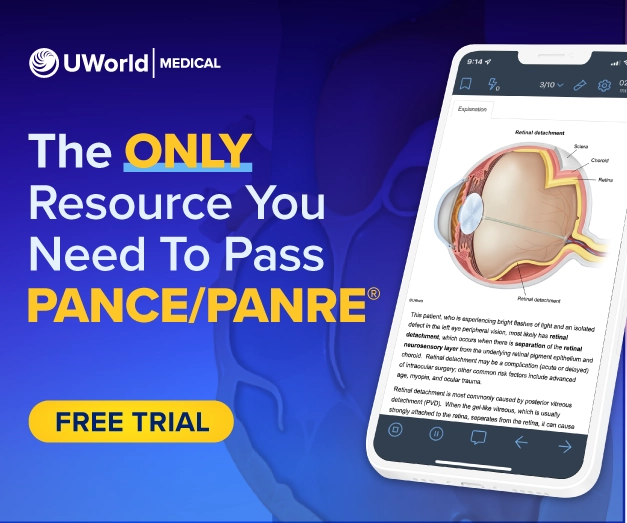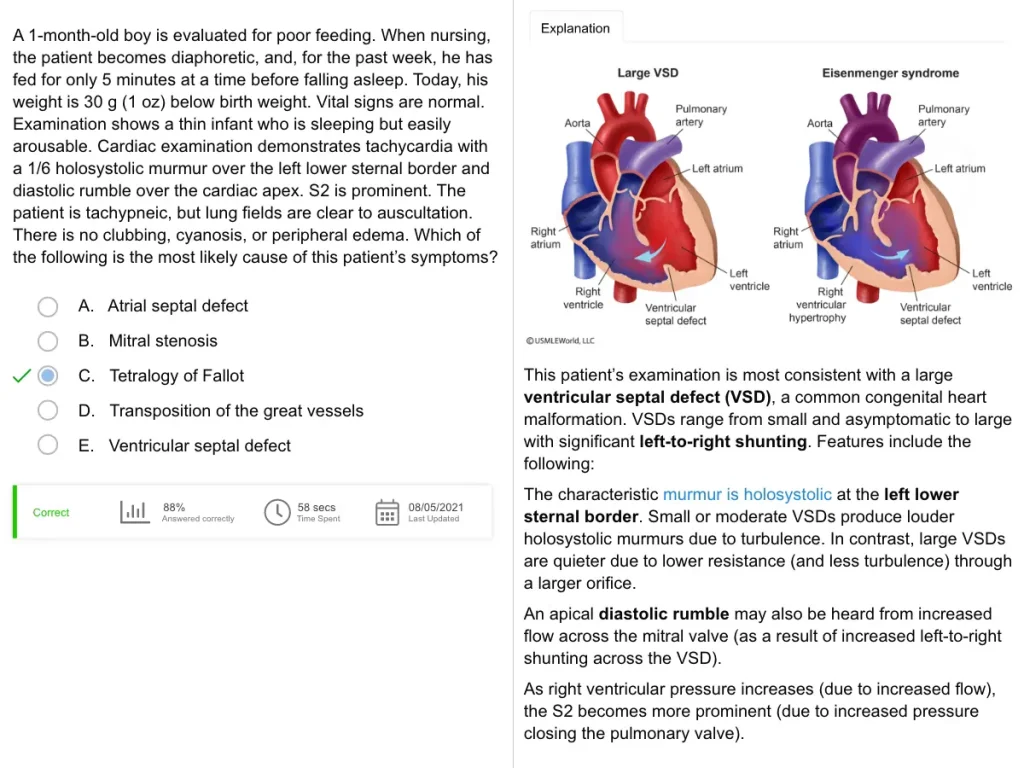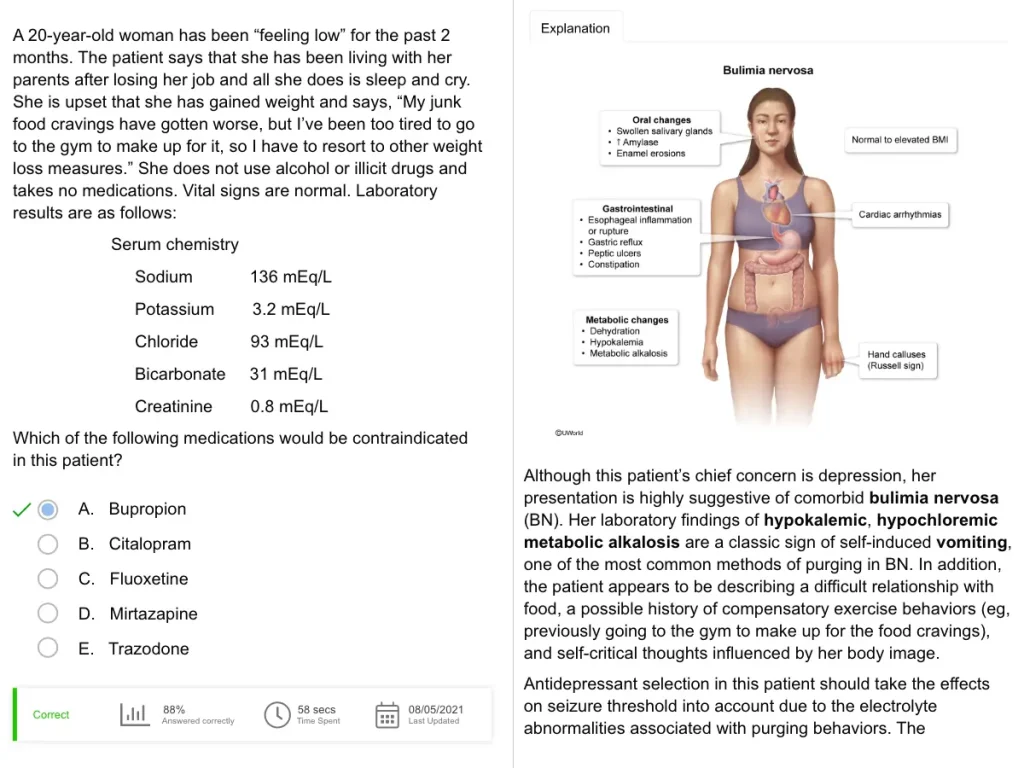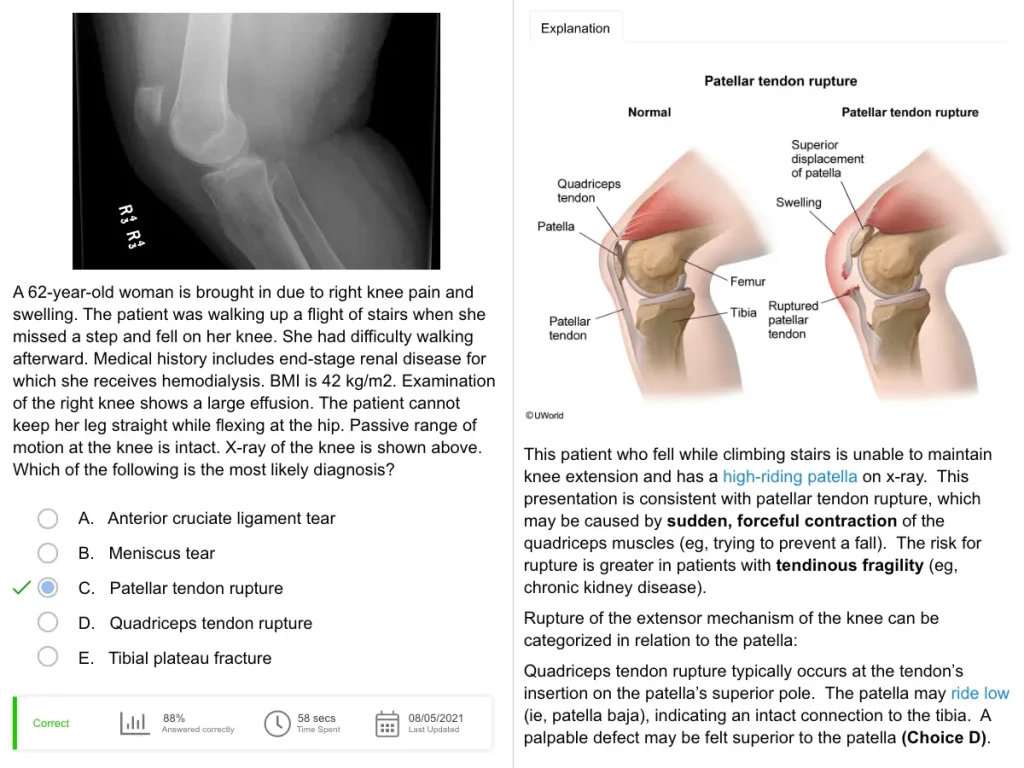The Physician Assistant National Recertifying Examination® (PANRE) is a recertification test required by the National Commission on Certification of Physician Assistants® (NCCPA®) to assess physician assistants’ core medical and surgical knowledge. To help you prepare for your PANRE, we’ll discuss recertification timelines, exam content, study tips, and other important information.
Purpose of the PANRE
Certified PAs must pass the PANRE or complete the Physician Assistant National Recertifying Examination Longitudinal Assessment® (PANRE-LA®) requirements to maintain licensure with the NCCPA and continue practicing medicine.
The overall purpose is to ensure PAs remain experts regarding ever-changing medical knowledge and practices. PAs must meet Continuing Medical Education (CME) requirements in addition to passing the PANRE or completing all the PANRE-LA requirements.
Who Takes the PANRE
If you’re a certified PA in your ninth or 10th year of certification, you can recertify by taking either the traditional PANRE at testing centers or PANRE-LA. To be eligible, you’ll need a valid PA-C certification and an unrestricted medical license.
When the PANRE Is Required
You must pass the PANRE every 10 years to maintain your license. During this time, you’ll complete five 2-year cycles, log 100 CME credits, and pay your certification fee by Dec. 31 of your expiration year. To register, log into your NCCPA account, pay the $350 fee, and follow the instructions to schedule your exam within a 180-day window. Read more about PANRE exam eligibility, registration, and costs.
PANRE Exam Format and Structure
The PANRE exam is completed in a 5-hour block consisting of four 60-minute testing sessions. Between each testing session is a 15-minute break, resulting in 45 minutes of total break time. The remaining 15 minutes in the 5-hour block are for you to complete a PANRE tutorial at the beginning of the exam.
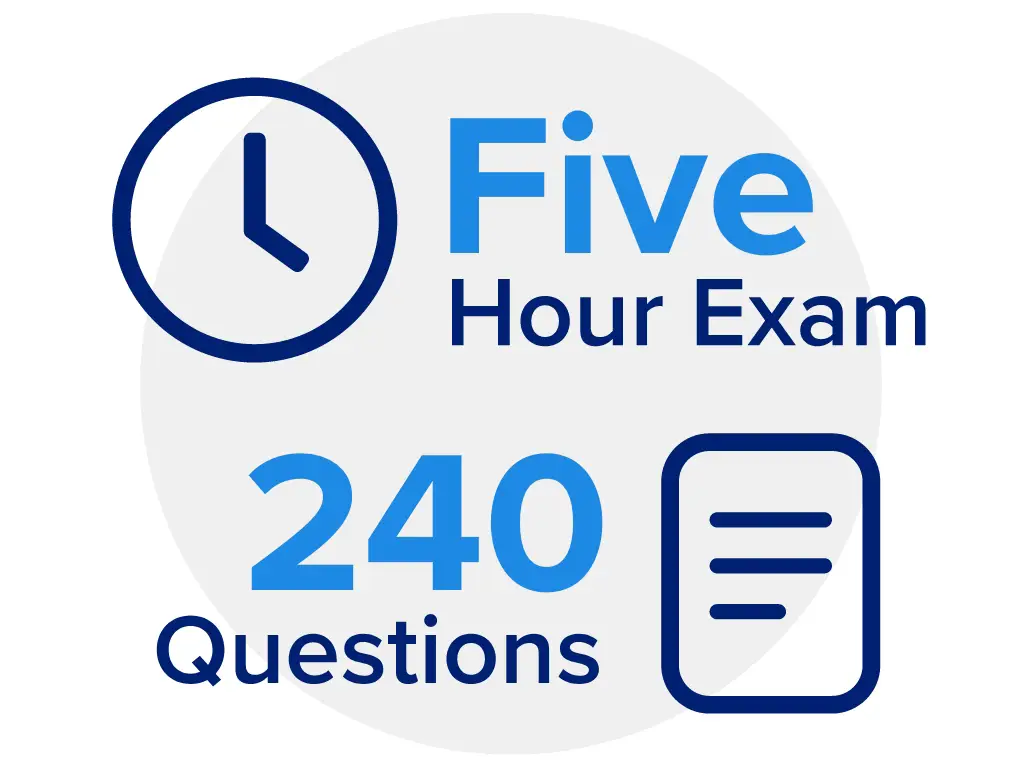
Number of Questions on the PANRE
There are 240 questions on the PANRE. Each block has 60 multiple-choice questions, resulting in a required average completion rate of 1 problem per minute.
To help you prepare, the UWorld PANRE QBank offers over 2,000 practice questions following the exam’s format. As you get comfortable with the material, turn on the timer feature to simulate the exam.
PANRE Break Policy
During your 5-hour testing block, you will receive 45 minutes of scheduled break time. You will receive break instructions on your screen when you complete a testing session. Any time taken beyond your allotted break time will be deducted from your testing time, meaning your exam may close earlier than expected. Here are a few rules to remember when taking your breaks:
- During scheduled breaks, you may access personal items stored in your locker.
- During unscheduled breaks, you may not access cell phones, computers, exam notes, study guides, books, or similar material that could assist you on the exam.
- During unscheduled breaks, you may access medication or food required at specific times with prior approval from the NCCPA.
PANRE Difficulty
The NCCPA uses a scale-score metric to report scores and account for differences in difficulty levels between exams. A minimum score is 200, a passing score is 379, and a maximum score is 800.
The PANRE is challenging because it requires a broad, up-to-date knowledge base across all areas of medicine. Specialists are highly skilled in their area of focus, but the breadth and variety of content required for the PANRE can make preparation difficult. Many PAs find that extensive studying in areas outside their specialty is necessary to succeed on the exam. It is important to use a high-quality resource that is representative of the exam.
PANRE Exam Content
The NCCPA has a detailed PANRE blueprint organized by content category and assessment level. PAs can get an idea for the detail at which each disease and disorder will be assessed by viewing these level-by-level breakdowns.
*These percentages may vary slightly with each PANRE exam.
PANRE Practice Questions
Make sure the practice questions you use fully represent the NCCPA blueprint, ensuring you can study every topic on the exam. Seek quality PANRE study platforms that cover real-life clinical scenarios and include detailed answer explanations and illustrations.
Realistic Test Simulation
The UWorld PA QBank features practice questions designed at the exam level or higher. Through challenging, exam-like questions and detailed answer explanations, we aim to help you pass PANRE the first time.
Tips for Passing the PANRE on Your First Attempt
Our data-driven approach to exam prep has helped thousands of PAs prepare for and pass their high-stakes exams. Our content team of practicing PAs has applied these proven methodologies to our PA QBank with the following suggestions to pass on your first attempt.
Before you begin your preparation, familiarize yourself with the PANRE exam. Take advantage of free NCCPA resources, such as their PANRE blueprint and documents regarding the exam’s eligibility requirements and format. Once you understand what to study, you can tackle how to study it.
Begin by completing practice tests focusing on each system. As you go through the QBank and read answer explanations, create flashcards and fill in your digital notebook for later review. You can then determine your proficiency in each system by viewing your personalized performance analytics.
Once you’ve been through the QBank, brush up on your weaker areas and review your flashcards and digital notes. As the PANRE nears, simulate the exam by creating 60-question tests with timed mode on. This will prepare you for the exam’s 1-question-per-minute pace and breadth of content areas.
Before you begin your preparation, familiarize yourself with the PANRE exam. Take advantage of free NCCPA resources, such as their PANRE blueprint and documents regarding the exam’s eligibility requirements and format. Once you understand what to study, you can tackle how to study it.
As a practicing clinician, you undoubtedly have a busy schedule. Because of the amount of material covered on the PANRE, we suggest
creating a PANRE study plan
at least 3 months in advance (and ideally 6+ months in advance). The UWorld PANRE prep course is designed with your needs in mind
Begin by completing practice tests focusing on each system. As you go through the QBank and read answer explanations, create flashcards and fill in your digital notebook for later review. You can then determine your proficiency in each system by viewing your personalized performance analytics.
Once you’ve been through the QBank, brush up on your weaker areas and review your flashcards and digital notes. As the PANRE nears, simulate the exam by creating 60-question tests with timed mode on. This will prepare you for the exam’s 1-question-per-minute pace and breadth of content areas.
Frequently Asked Questions (FAQs)
What is the difference between the PANCE and PANRE?
To initially become a PA, candidates must pass the Physician Assistant National Certifying Examination (PANCE). To maintain licensure, PAs must pass the Physician Assistant National Recertifying Examination (PANRE). Both exams follow similar blueprints that are updated to reflect modern medical knowledge and practices.
Is the PANRE going away?
No. The PANRE is not going away. However, PAs now have the option to recertify by completing their Continuing Medical Education requirements and passing the PANRE-LA. The PANRE-LA features a new testing format but follows the PANRE blueprint.
What do I need to bring when taking the PANRE?
Bring 2 IDs: 1 with your photo, name, and signature, and another with your name and signature matching NCCPA records. Personal belongings can be stored in a locker but aren’t allowed in the testing room.
Can I use a calculator on the PANRE?
No. You cannot bring a personal calculator into the PANRE testing room. Any required resources or tools will be provided via the exam’s online interface.
How many times can you take the PANRE if you fail?
PAs can take the PANRE up to 4 times — twice in their ninth year and 3 times in their 10th year. While a 90-day gap is required between attempts, this rule is waived for a final attempt if fewer than 90 days remain in the 10th year and all 4 attempts haven’t been used.
Read More About the PANRE
PANRE Exam Eligibility, Registration & Cost
Learn the details of PANRE eligibility and registration requirements to maintain licensure, as well as overall exam costs.
Create an effective, customized PANRE study guide and schedule by following the advice of our in-house physician assistants.
Discover how the PANRE is scored, what you need to pass, the difficulty level, and historical pass rates.
Learn the percent allocation of the content areas tested on the PANRE, as well as the assessment level of diseases and disorders.


